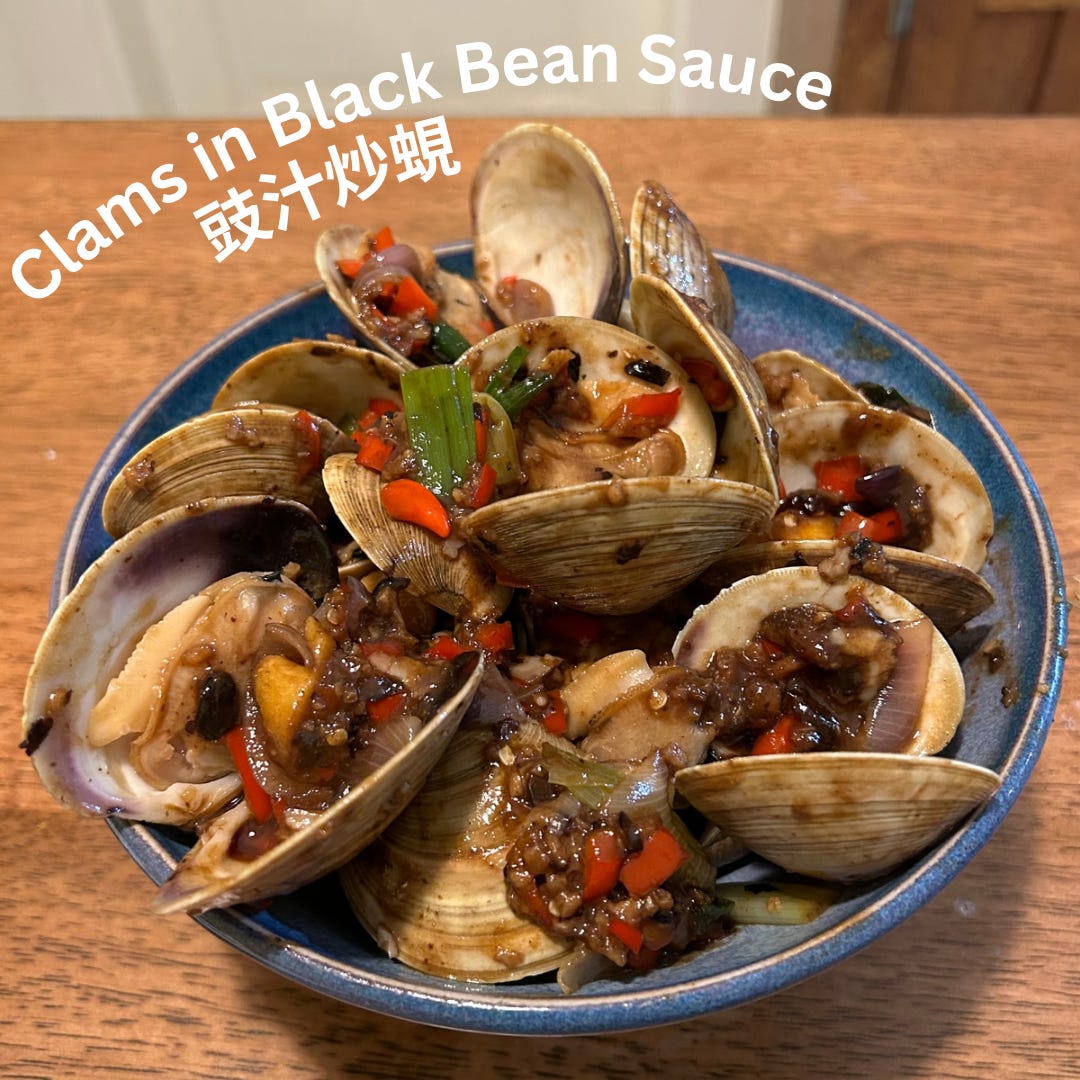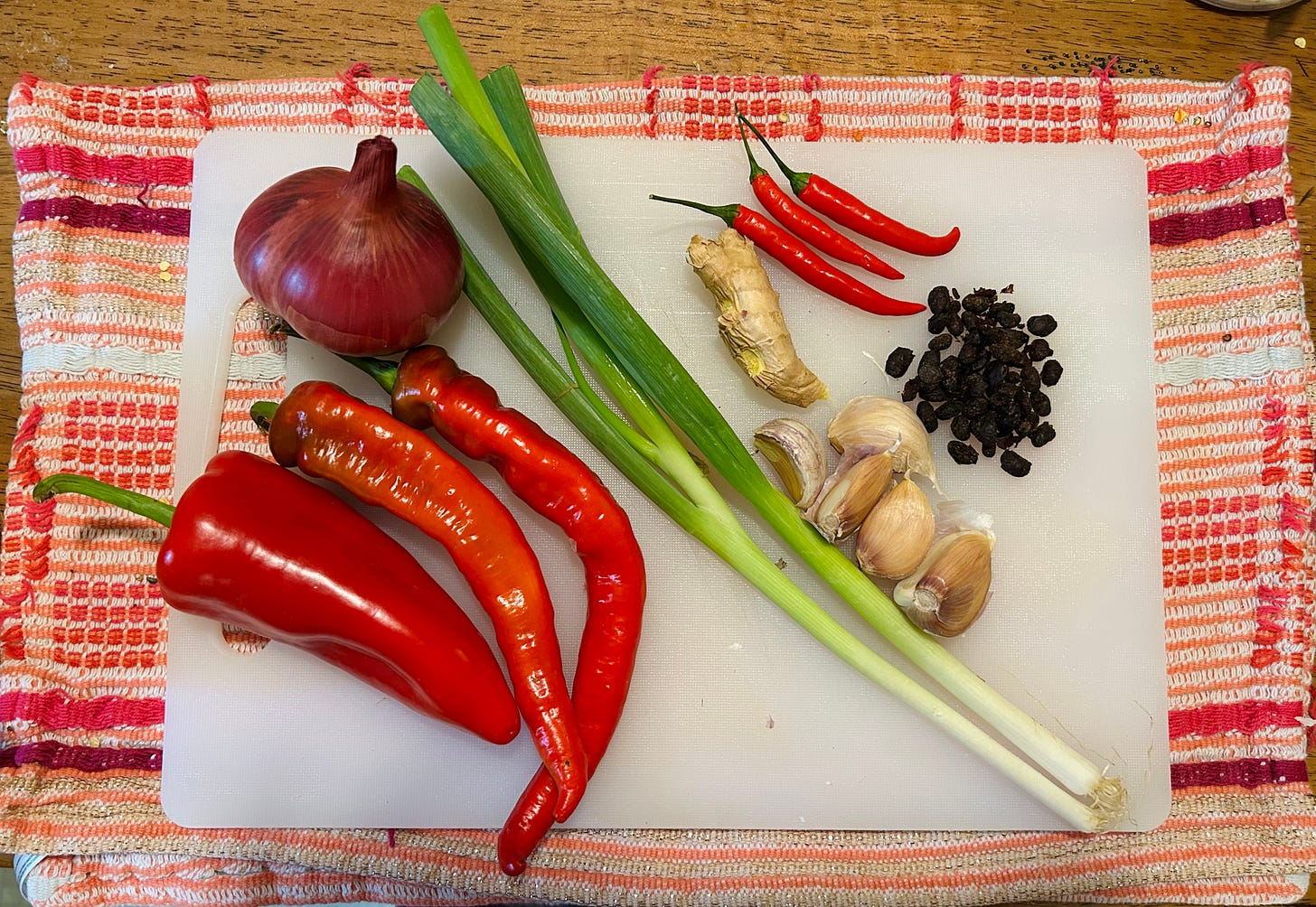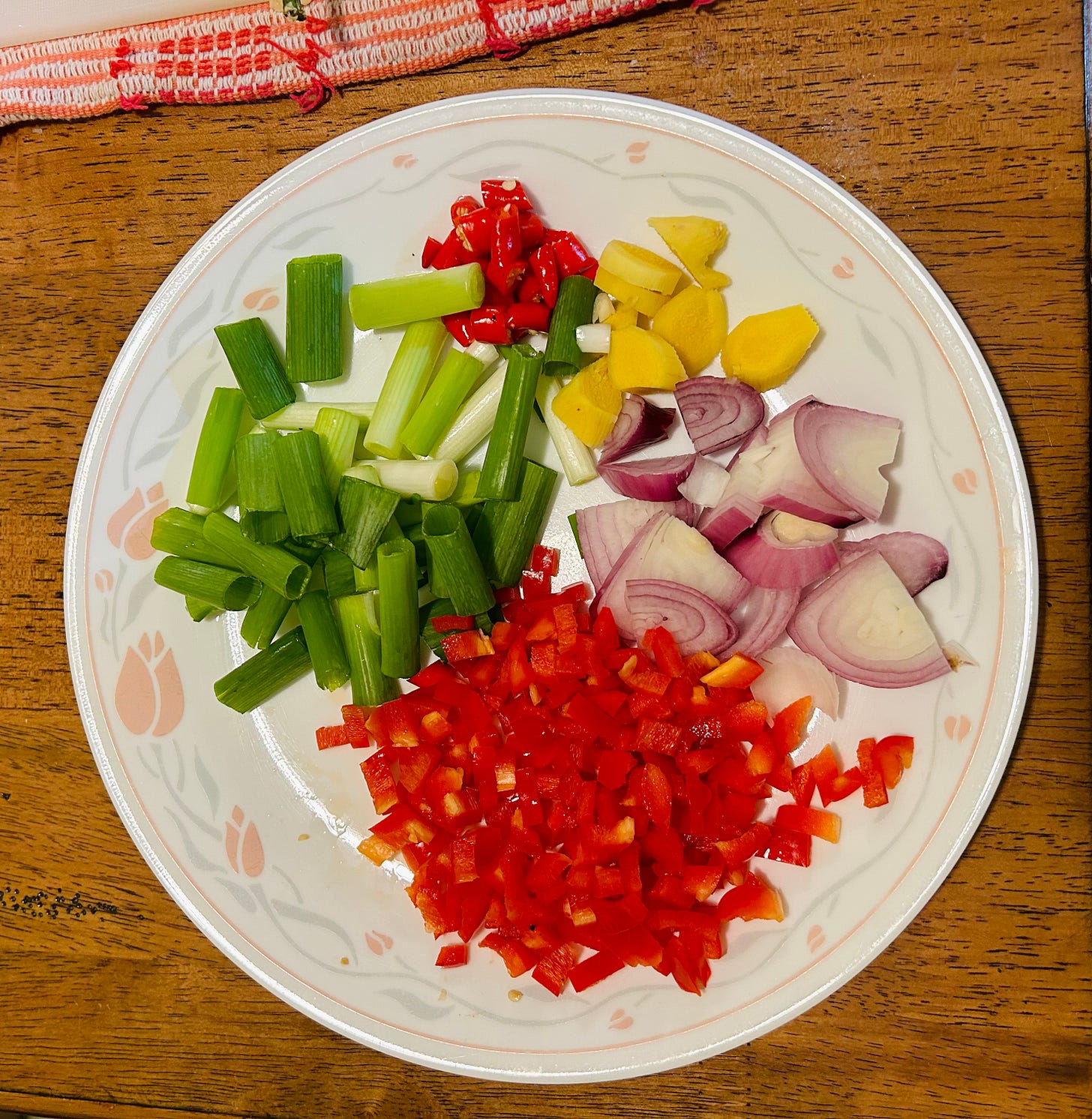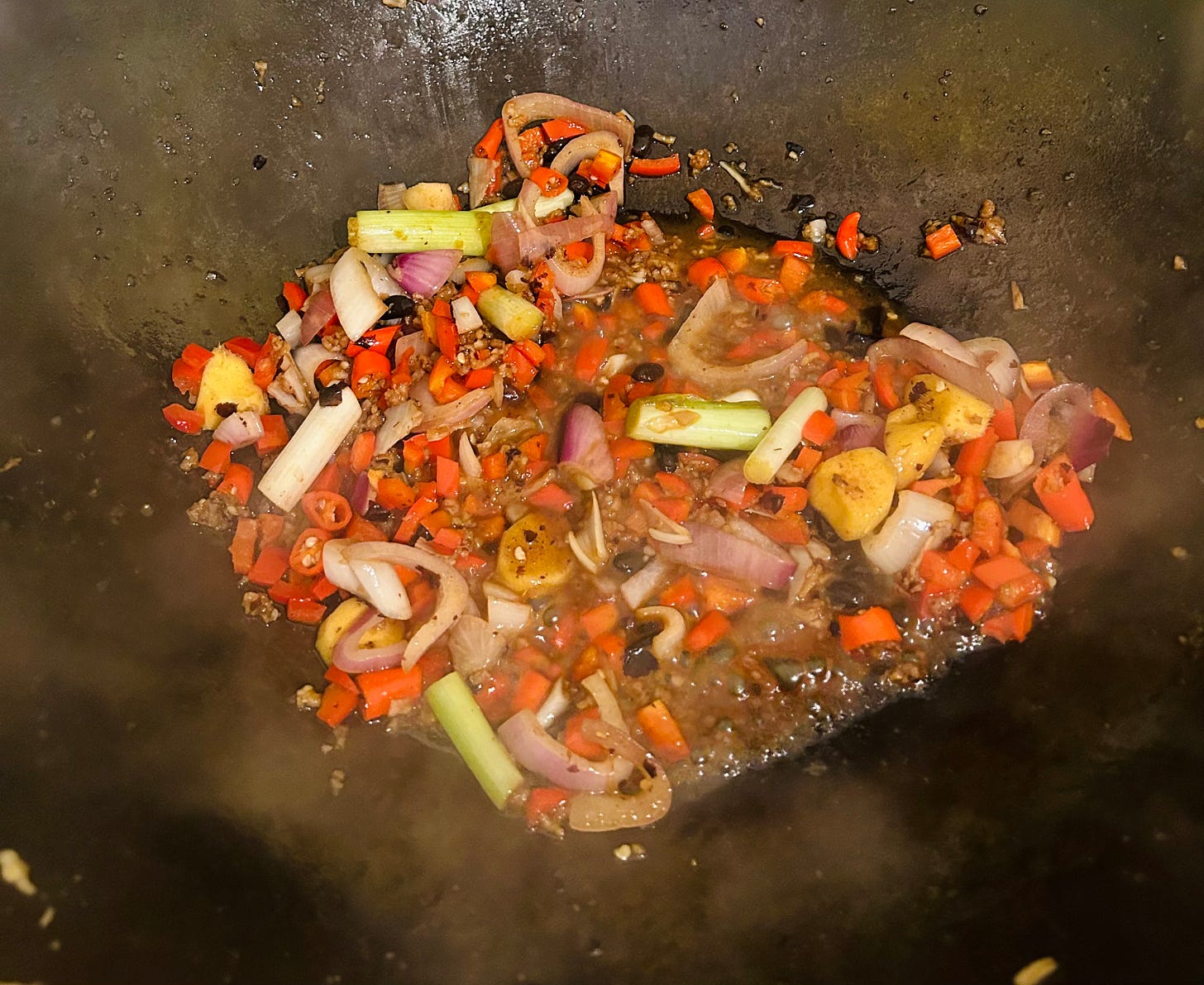This is one of my favorite things to get at Chinese restaurants, and I’m so glad that it’s not hard to recreate at home! Black bean sauce is so easy to make at home that I highly encourage you to do it if you can. I consider it a Cantonese mother sauce.
Hot take(?): clams are the easiest meat to cook. If I were to teach a beginner chef, I would start them on clams. All that’s required is an easy saltwater soak. No marinating, tenderizing, or slicing is required. They have an easy indicator of doneness: they just need to open up (though, the texture will vary depending how open they are). They just require a watchful eye (and/or ear) because they pop open in just a handful of minutes.
This recipe is heavily inspired by the one published by Chinese Cooking Demystified, which is a YouTube channel that does a great job at recording and preserving dishes that are specific to different regions of China. I borrow a couple things from their version and add my own flourishes to amplify that delicious clam flavor and make it my own. Thank you, Steph and Chris, for teaching me so much about how to make this dish!
the recipe
Serves 2
Ingredients
2 lb littleneck or manila clams
1/3 cup kosher salt
1 small- or medium-sized shallot
2 scallions
1-2 small sweet peppers or 1 red bell pepper
1 thumb-sized piece of ginger
5 cloves garlic
1 Tbsp dau si (fermented black beans)
3 Thai chilis
soy sauce to taste
a pinch of sugar
1 Tbsp cornstarch
1 Tbsp high-smoke point oil
Whiskey or wine of your choice to taste (I use Johnny Walker but Shaoxing wine or sherry will work well, too)
oyster sauce to taste
1-2 Tbsp cilantro for garnish (optional)
1 lime
Inspect the clams: Clams should be alive when you cook them. They should be tightly closed with smooth, unbroken shells. If you see any clams with cracked or broken shells, throw them out. If you see any clams that are open, even a little bit, tap another clam against it to see if it will close. If it does, this clam is still alive and edible. If not, it’s dead and should be discarded.
Soak the clams in very salty water for one hour: This will purge the sand and grit out of them. Fill a large bowl or pot with about a gallon of water, and then stir in the salt until it’s mostly dissolved. The exact salinity of the water isn’t super important, and I often eyeball it, though for this recipe, I find that Master Class’s ratio of 1/3 salt to 1 gallon water is effective. Add the clams and then put the pot or bowl in the fridge to soak.
Prepare the vegetables and aromatics: While the clams are soaking, finely mince the garlic, peel the ginger and slice it into quarter-inch rounds, chop the scallions into 2-inch pieces, slice the shallots, dice the sweet peppers/bell pepper and Thai chilis, and rinse the dau si. Arrange everything but the garlic and dau si on a plate.
Pound the garlic and dau si: Do so until the dau si starts to become incorporated into the garlic, but no need to make it into a paste. You can do this in a small bowl with the butt of a cleaver or with a mortar and pestle. Add about a tablespoon of soy sauce and a pinch of sugar and mix. Set aside.
After the clams have soaked, remove them from the refrigerator, wash them, and cook them: Place a wok on high heat and add about a cup of water, no need to be precise. The water is just for steaming them. Add the clams and then cover the wok. After a couple minutes, check to see if any clams have opened up. No matter how open the clam is, even if it’s just a crack, rest assured that it is cooked. The less the clams are open, the softer the meat will be. Allow the clams to cook and open up to your desired texture — I usually take them out when they’re halfway open. Place any opened clams into a bowl. If there are still clams that haven’t opened, put the lid back on and let them steam for another couple minutes. If you hear any faint popping sounds, open up the lid and check if any clams have opened. Allow the clams to steam until they’ve all opened. The longest I would wait for this is about ten minutes. Any clams that have not opened up by then are not edible, and you should toss them. Reserve the delicious clam juice that’s left in the wok and pour it into a small bowl!
Make a clam juice slurry: In a small bowl, mix the cornstarch into the clam juice to make a flavorful slurry and maximize the clam flavor! Set aside.
Stir-fry the aromatics: Keeping the wok on high heat, add the oil and swirl it around. Add the mashed garlic and dau si, and stir-fry until fragrant. Then add the ginger, all the peppers, the shallots, and the white parts of the scallions. Stir-fry for another minute before adding soy sauce and whiskey or wine to taste.
Add the clams: Mix all of the ingredients together, then add oyster sauce to taste. Add the green parts of the scallions. Add the clam juice slurry to the wok a spoonful at a time, and after each spoonful, mix everything together until you reach your desired viscosity. I prefer the sauce to be just thick enough that I can easily get it inside the clams without it sliding off, but not thick like honey. Once you have your desired thickness, shut off the heat.
Add fresh lime juice: This provides the dish with a final dose of acidity that clarifies all of the other flavors. Cut off a slice or wedge of the lime and squeeze into the dish. Mix it together and taste it to see if it needs anything else.
Garnish with cilantro (optional) and serve!
‘Til next time,
Shannon










